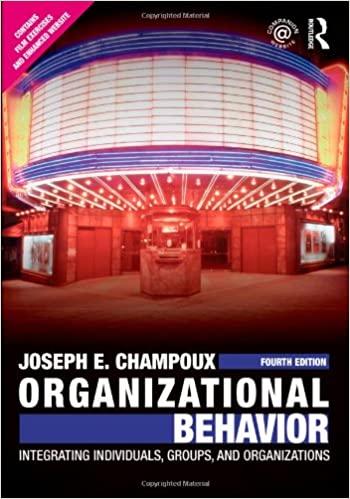Discuss the culturally based differences in decision making and problem solving described in this chapter with students
Question:
Discuss the culturally based differences in decision making and problem solving described in this chapter with students from countries other than your own or with students who have visited other countries. Have any students experienced the differences described? Discuss their reactions to those differences.
THE DECISION-MAKING PROCESS
The decision-making process is much more than choosing from alternative courses of action. The process involves several interrelated phases, only one of which is choice. Figure 14.1 shows those phases. Decision processes are dynamic. They can unfold linearly or restart at an earlier phase. A decision maker can also repeat or restart the entire process, depending on the conditions that unfold during the process. Decision makers can move in both directions in the sequence and even stop for an extended time at one phase.
The first phase is problem identification and diagnosis. The organization faces an issue or problem that needs a solution. The issue or problem could be as simple as a request by a customer or an employee to do something not covered by existing policies or as major as widespread unethical behavior in the organization. Whether the problem is simple or difficult, its presence starts the decision process.
The first phase includes identification of criteria that will show that the issue is resolved or the problem is solved. This element is important, because it ties directly to the last phase, which is assessing the decision’s effects. The criteria should be as explicit and as measurable as possible so managers can determine the success or failure of the decision.
The second phase focuses on developing alternatives for dealing with the issue or solving the problem. The decision maker searches for alternatives and information about the alternatives. The search can be informal, such as a telephone call for advice on a simple but unusual issue, or formal, such as a marketing survey to find out why the company’s product is losing market share. When faced with a complex problem, the decision maker might look at many different alternatives and consider them simultaneously. During the search, the decision maker often faces time and cost constraints, which can lead to imperfect or incomplete information about each alternative.
Decision makers discard alternatives they view as unacceptable solutions to the problem or issue, based on the criteria developed in the first phase. Acceptability, of course, is a judgment based on the decision maker’s perception of the alternatives. Acceptable alternatives then become part of the decision maker’s set of possible alternatives that move to the assessment phase of the decision process.
The decision maker now assesses the alternatives in the feasible set. She examines each alternative to see what desirable and undesirable results it is likely to have. The decision maker considers whether those affected by an alternative are likely to accept it. How well the decision is accepted can affect its success. The decision maker also considers the amount of risk each alternative involves and the certainty of its results.
After the decision maker completes the assessment, she must choose an alternative. Although people commonly associate decision making only with this phase, the decisions are actually made by means of the entire dynamic and interdependent process just described.
Decision makers may face several dilemmas, including the following:
- Two or more alternatives appear equally good. If the decision maker is truly indifferent, a random process such as a coin toss can make the choice.
- No one alternative can solve the issue or problem. Here the decision maker can use a set of alternatives to solve the problem or restart the decision process to search for better alternatives.
- No alternatives offer enough positive results to offset expected negative effects. The decision maker can restart the process to see if better alternatives exist. Note that, in both this and the previous dilemma, a decision has been made—the decision not to decide.
- The decision maker perceives many alternatives as acceptable. The decision maker can go back to the previous phase to get more information about the alternatives and then try to make a choice.
The decision maker is ready to carry out the decision after she has chosen an alternative. Moving the decision to action is often as complicated as making the decision. Those asked to carry out the decision may accept decisions about simple issues but resist tough decisions about complex problems. The major issues in this phase go beyond the quality of the decision. They focus squarely on managing a successful implementation.
The last phase in the decision process assesses the decision’s effects. The criteria for assessing the decision come from the first phase. The people asked to carry out the decision measure the results and compare them to the criteria. If the results are not as desired, corrective action may be required. If it becomes clear that the criteria need revision, the entire process begins again.
Step by Step Answer:

Organizational Behavior Integrating Individuals Groups And Organizations
ISBN: 9780415804646
4th Edition
Authors: Joseph E. Champoux





